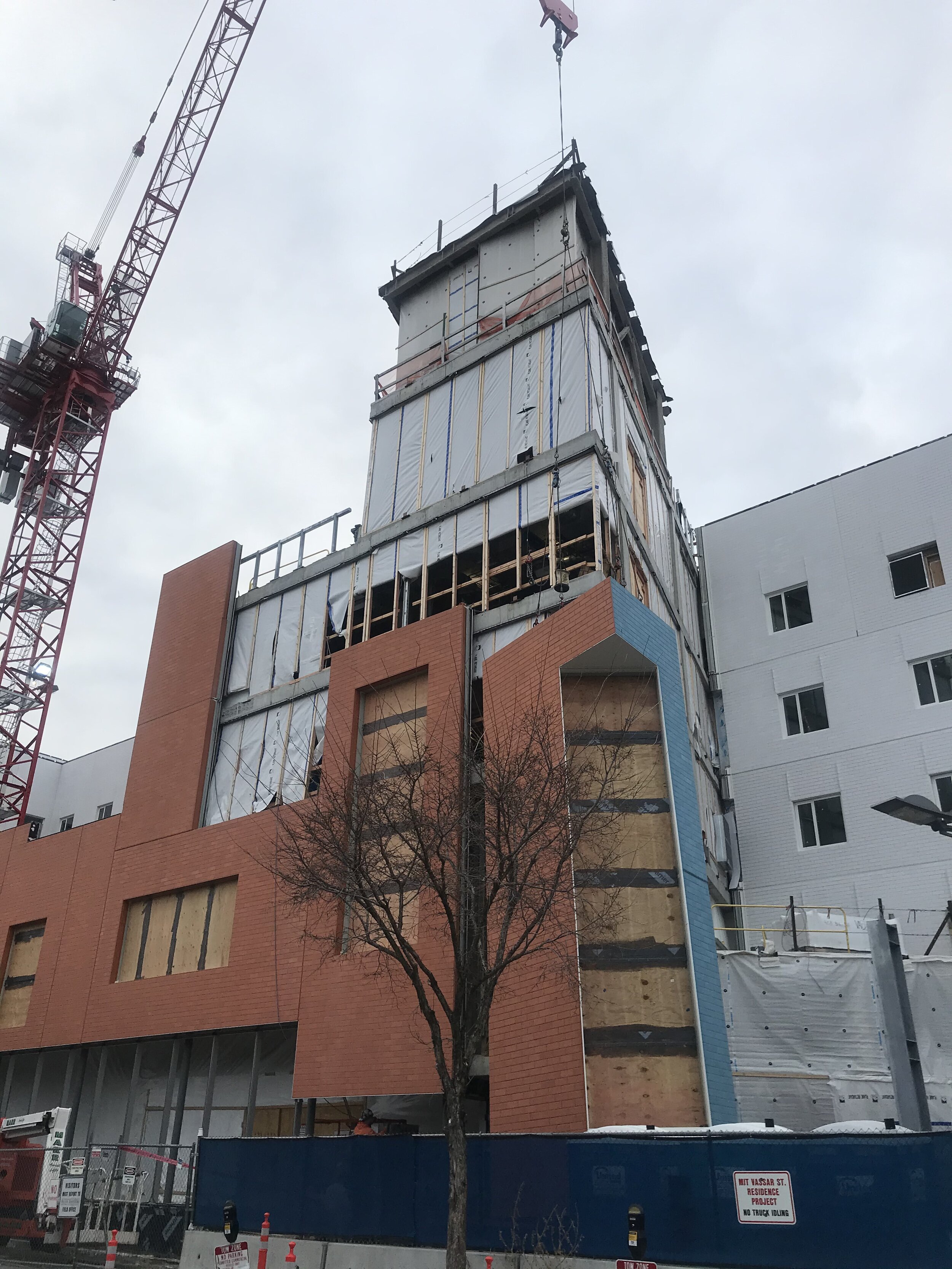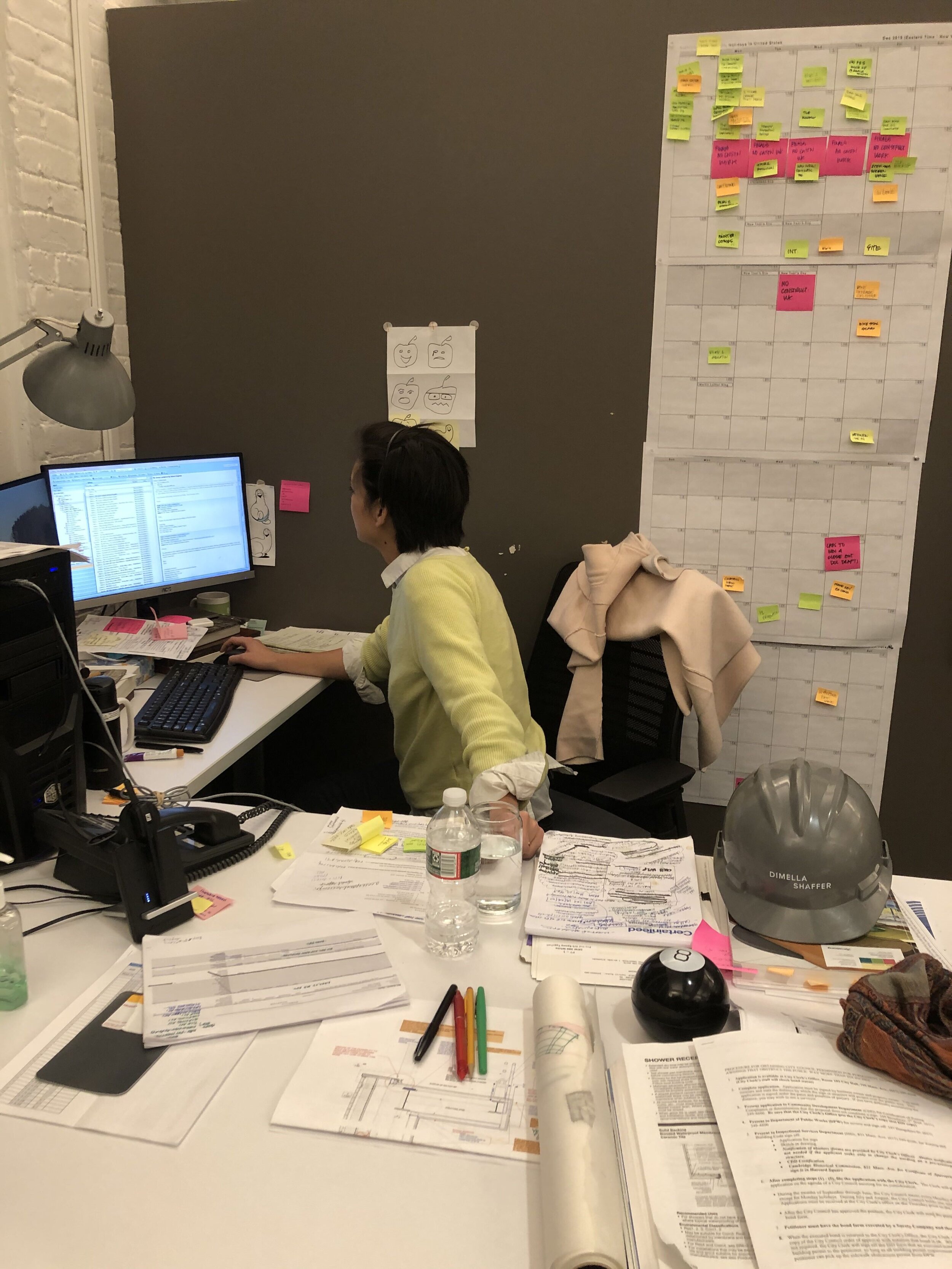KATHLYN KAO
Portrait courtesy of Kathlyn Kao.
Kathlyn Kao is a Master of Architecture candidate at the Harvard Graduate School of Design where she is a research assistant for the GSD First Generation Initiative, Bloomberg City Leadership Initiative, and the Loeb Library Building for Tomorrow Project. She holds a Bachelor of Architecture from Cal Poly, San Luis Obispo, and is a registered architect in New York with a range of professional experiences including DiMella Shaffer Associates, Christoff:Finio Architecture and artist Do Ho Suh. Her interests are at the intersection of design, art, politics, and post-colonial studies.
Designing through Humility, Empathy, Nuance, Perseverance, and Collectivity
What inspired you to study architecture?
I think the easy answer would be that I followed in my father’s footsteps. But I think that’s a misnomer. I want to give my father credit; he kept his work fairly separate from the family. He never pressured my siblings and me into any career direction. Though I think he knew from the very beginning that of my siblings, I would be the one who would turn to architecture despite my lack of self-awareness. When I announced that I would switch from engineering to architecture, I think the first thing he said was, “finally!”
In elementary school, we would often be called upon to stand up and read off the blackboard. I had a speech impediment growing up and was in blatant denial about my poor eyesight for one reason or another. Public speaking was a particularly excruciating thing for me, which meant I grew up fairly quiet and shy. Instead, I cultivated a strong affiliation for drawing – it was a medium of expression for me to communicate, observe my surroundings, and imagine different kinds of worlds. I drew on everything; walls, paper, tables, dolls, books, and frequently, the things I drew most were buildings and spaces. The skills developed a way of thinking – a way of thinking through drawing that naturally extended into the architecture field.
Sketchbook during travels.
Name a woman architect who most influenced you as an emerging professional? How?
That’s a difficult one because I would like to pay homage to many women in my life. I’m going to cheat and say many: Courtney Coyne Jensen, Diana Linsenmayer, Charlotte Malterre-Barthes, Jennifer Newsom, and Somayeh Chitchian. All of whom have encouraged, supported, taught, and guided me to new ways of thinking and leading in one way or another.
If I must highlight one, it would be Courtney Coyne Jensen whom I studied under during my year abroad in Copenhagen, Denmark, at the Danish Institute of Study Abroad. Under her guidance, architecture began to click for me – the leap from codified language to a spatial understanding took off under her mentorship. Courtney was both my studio professor, advisor, and today, my mentor. She gave me a model of what an activist/ urbanist/ architect could be with a practice based on empathy, curiosity, and leadership.
Courtney Coyne Jensen on a site visit with students.
Name a favorite project completed by a woman Architect. Why is it your favorite?
Lina Bo Bardi’s SESC Pompeia. Built in 1986 in Sao Paulo, Brazil, the building is a publicly funded arts and leisure cooperative that houses diverse programs, including exhibitions, restaurants, educational courses, and recreation areas. It was built on a former brick factory site and maintained the nearby existing brick structures around it. I love this project because it is a model of how design can engage with the public while evoking a sense of playfulness and authenticity. It is poetic and confident, existing outside of a certain time. I can’t help but let my imagination take off when I study Bo Bardi’s work, and this building is an all-time favorite.
Are there any organizations that helped you grow in architecture? How did they help you grow?
No organization, in particular, comes to mind. However, one experience really defined my trajectory in architecture. After my undergraduate studies, I had moved to NYC, looking to reestablish a coordinate axis to place myself and my relationship with architecture. It was a chance to explore the fringes of the discipline. After all, if I could not define what architecture was in its most developed state, then could I define it through its photonegative? At the time, I was an art assistant for Do Ho Suh’s Rubbing/Loving series that was the precursor to The Perfect Home II exhibit. Rubbing/Loving is a 1:1 full-scale pencil rubbing of Suh’s NYC apartment. It’s a piece that centers on themes of displacement, memory, and home. As a first-generation American, the experience struck a chord that catapulted me back into architecture practice. If art could bridge themes of identity, meaning, and the domestic, certainly architecture could too. Moral of the story: sometimes, it is important to see yourself through another’s eyes, and sometimes functioning on the fringes may get you closer to the center than you would expect.
Do Ho Suh Home Away from Home Documentary.
What is your favorite memory in architecture school or work? Why?
Exterior Panel installation for MIT Vassar Street Residence.
While I got into the discipline to satisfy a certain curiosity, I really stayed for the people. I am a creature of collaboration and relationships. So, while at times challenging, the last project I worked on is one of my fondest memories. The team became very close over three years (heavy shout-out to Diana Linsenmayer and Doug Rand). The project finished a couple of months ago. It has been a full joy to walk the completed building with the team, but the sensation of seeing the building full of students and sharing it with my friends and family is a whole different sense of triumph.
As you reflect on the past year, what did you discover as your biggest strengths?
As a Chinese-Filipino American woman, I have always functioned in the multi- hyphen. When I was younger, that was a difficult thing to navigate. It constantly questioned my sense of belonging. But now that I’m older, I find that I’m more empowered to construct places of belonging and inclusion rather than trying to insert myself into dominant streams of space. Now more than ever, I depend on that hyphen. It has taught me about humility, empathy, nuance, perseverance, and collectivity. This past year has called on these strengths more than ever, and as I leaned more heavily upon them, I have come to unconditionally love the multiplicities of my identity.
Working at DiMella Shaffer Associates.
If you were able to talk to your younger self, what would you say?
Honestly, whatever I have to say to my younger self is probably applicable to me today. But if I were truly talking to my younger self, I’d like to give her permission and time to rest. I’d take care of her – cut her fruit, make her congee and a hot cup of tea. It’s not talking, but sometimes, acts of service can show more love than words can, and there were moments in my adolescence and twenties where I felt adrift and a dire sense of foreboding. Looking back at those times, I think a healthy dose of rest and validation might have done wonders.
Final review of student work at Cal Poly.
What would you want to say to the next generation of aspiring women architects?
You always have the power to change how this story will end. The discipline and the practice have predominately functioned in a constructed veil of assumed neutrality and has always preferred a very particular type of Architect.
Question that.
Question why you aren’t represented in all your intersections.
Demand for representation.
But most importantly, Imagine. Imagine what could be and what could have been, and then Act.
Illustration: The Redacted Block. Partner: Cindy Yiin.
In terms of rising concerns and problems (in the architectural profession) over the past year, what is one change that you wish saw would happen and it did not?
Interior photograph of previous research. FlatPack: Optimizing a Disaster Relief Shelter Using Prototypes.
Professionally, there must be better programs, policies, and initiatives that are specifically catered to minorities. While non-exhaustive, this means we need better outreach that includes youth and mentorship programs. We need policies informed by disaggregated data that incorporates historical and present-day contexts (e.g., debiasing job descriptions). This could be a new financial membership model for NCARB and AIA that is either waived, subsidized, or on a sliding scale for emerging professionals. Or policies that advocate for full pay transparency of employees and employers, a lower barrier to entry into licensure that tackles the steep costs of test-taking, increases access to study materials and education. We need office policies and a culture that does not penalize employees for study time. For intermediate designers, we need policies that guarantee longer maternity and paternity leaves, review of onboarding and performance policies, and advocates for flexible working schedules that also respect boundaries. At a city, state, and federal level, we need subsidies and programs that prioritize contracts awarded to small minority and women-owned businesses, center development for affordable housing, environmental remediation, sustainable and resilient practices. Ultimately, we need to support and cultivate diversity in the profession so that we may begin shifting the profession from designing for to designing with.
Presenting a lecture on the MEP and Structural systems of the MIT Vassar Street Residence.











